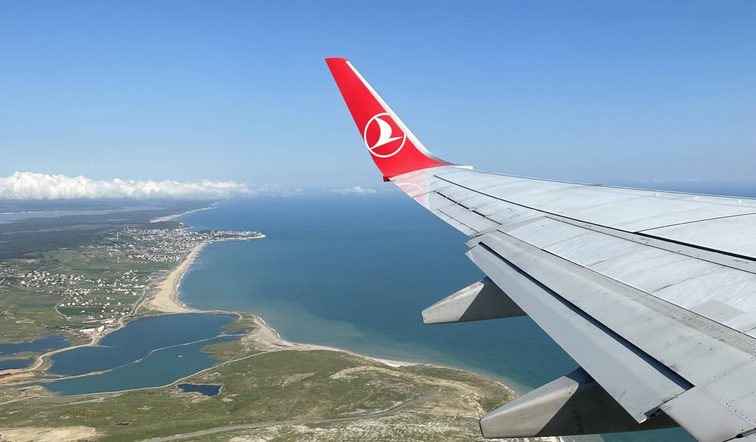For a digital nomad, the world is your office. You can work at a Bali beach, a busy café in Buenos Aires, or a strange Tuscan village. But before you drink a cappuccino in Italy or catch waves in Indonesia, you have to get there. And for digital nomads who prioritize location independence and financial freedom, the art of booking cheap flights is an essential skill.
Travel on a budget is crucial when income is dependent on online work and unpredictable customer programs. Every dollar saved in a flight can be reinvested in your business, prolonged journey, or simply offer peace of mind. Forget about luxury airlines and first-class places; focus is on smart planning, smart techniques and the desire to be flexible. This guide will equip you with five actionable steps to constantly block those evasive, wallet-friendly flights, allowing you to explore the world without breaking the bank.
Step 1: Embrace the Mindset Flexibility – Date, destinations and starting points
The only strong factor in ensuring cheap flights is flexibility. Digital nomads have a significant advantage here, not related to traditional holiday programs or specific geographical locations. Accept that freedom.
Dates: Be willing to adjust your travel data. The mid-week flight (Tuesday, Wednesday or Thursday) is often cheaper than the weekend flight. Consider the trip during the off-season seasons or shoulder. These periods often offer lower prices and fewer crowds. Use flight search engines such as Google Flights, Sky scanner, and Kayak, which allow you to view prices on a series of data Use “flexible data” or “full month” to identify the cheapest flight days. Experience with flying one day sooner or later even one day difference can save a significant amount Destinations: Be open to alternative destinations. Instead of focusing rigidly on a particular city, explore airports or nearby countries. Often, flying to a secondary airport and taking the ground transport to the final destination will be considerably cheaper. For example, if you want to visit Barcelona, consider flying to Girona or Zeus and taking a bus or train.
Starting points: Consider flying from different airports near home base or current location. Airports in smaller cities or those served by low-budget airlines often offer lower rates. Use flight search engines to compare prices at several airports in your region. I might be surprised by the savings that you can unlock driving a few extra hours at another starting point.
Step 2: Master art flight search engines and alerts
Flight search engines are best friends looking for cheap flights. However, not all search engines are created equal and each has its strengths and weaknesses.
Explore multiple platforms: Don’t just rely on a search engine. Compare results from Google Flights, Sky scanner, Kayak, Momondo, and others. Each platform has its own algorithms and partnerships, so they are likely to find different offers.
Incognito mode is your friend: Airlines and search engines sometimes follow your search and can increase your prices subtly when they find you repeatedly looking for the same flights. To avoid this, use Incognito mode (with private browsing) in your web browser. This prevents tracking cookies and sailing history.
Set Up Price Alerts: Take advantage of the price alert features offered by most flight search engines Configure alerts for routes and specific data, and you will receive email notifications when prices drop. This is a passive way to monitor flight prices and jump when a good deal occurs Do not be afraid to set alerts for multiple destinations and data to maximize the chances of finding a bargain.
Be aware of hidden taxes: Pay special attention to baggage, seat selection and other hidden charges. Budget airlines often lure passengers with low basic rates, but then add significant fees for additional services. Factor these charges in comparing general costs before making a reservation.
Step 3: Embrace Budget Airlines (With caution)
Budget airlines can be saving a digital nomad, offering incredibly low rates for a wide range of destinations. However, it is essential to approach budget airlines with a healthy dose of caution and a clear understanding of their limits.
Meaning Trade-offs: The airlines in the budget usually offer lower rates by reducing facilities and services. It is expected to pay extra for luggage, seat choice, meals, and even water. Be prepared for a shivering experience.
Check for Hidden Fees: As I mentioned earlier, meticulously check the hidden charges. Careful review of the baggage allowance policy and the cost factor of checked or transported baggage. These charges can quickly cancel the savings in the low basic tariff.
consider Location and Convention: Budget bindings often fly to smaller, less convenient airports that are further away from city centers. Factor in cost and time to travel from airport to final destination. Sometimes additional transport costs and inconvenience exceed the savings from cheaper flights.
Read the reviews and get ready: Search the airline’s reputation and read other travelers’ reviews. Be aware of any delays, cancellations and customer service problems Pack essentially such as snacks, water, and entertainment to make flight more comfortable
Step 4: Bounty programs for travel and points for credit cards
Travel reward programs and credit card points are powerful tools for digital nomads who want to minimize travel expenses. With strategic accumulation and redemption points, you can significantly reduce the cost of flights.
Join Airline Laity Programs: Sign up for air loyalty programs and earn miles every time you fly. Even if you fly primarily with different airlines, accumulating miles in multiple programs can eventually lead to free flights or upgrades.
Use of travel credit cards: Consider applying for a travel credit card that offers bonus points for travel-related purchases. Many travel credit cards also come with advantages such as free checked luggage, priority boarding, and access to airport lounge.
Redeem Points strategically: When you recharge points, be flexible with your dates and destinations. Look for the off-peak travel times and consider flying to less popular destinations. Be also aware of the blackout data and other restrictions that may apply to the award bookings.
Transfer strategic points: Some credit cards allow you to transfer points to airline loyalty programs. This can be a very good way to strengthen points and maximize their value. Search the transfer report and any associated charges prior to a transfer.
Step 5: Embrace the unforeseen last-minute and the wrong deals
Sometimes the best flight offers are suddenly found. Pay attention to last minute deals and wrong rates, but prepare to act quickly Airlines sometimes offer reduced rates on unsold seats closer to their departure date. These last-minute offers can be a great way to save money, but they also have risks. Availability is limited, and you must be flexible with your dates and destinations Mistake Fares: Occasionally, airlines accidentally publish incorrect rates due to human errors or technical errors. These wrong rates can be incredibly cheap, but they’re also transient. If you notice a mistake, book it immediately, but be aware that the airline can cancel the reservation.
Get ready to act fast: Last minute offers and error rates disappear quickly. Be prepared to make a reservation immediately. Your passport information and credit card details are available.
Don’t Overthink It: If you find many, don’t hesitate. Prices can change quickly, and you might miss if you wait too long.
Accepting these five steps, digital nomads can master the art of booking cheap flights and unlock a world of affordable travel opportunities. Remember, flexibility, research, and a desire to embrace unexpectedly are the biggest assets in search for budget-friendly flight. So pack your bags, turn on your laptop and get ready to explore the world without emptying your bank account. People are waiting!

